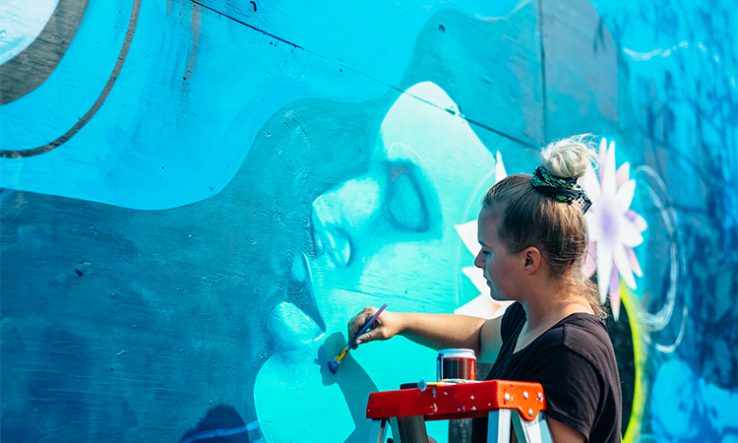
Artists and designers are joining researchers in a pilot scheme on transforming cities
Across Europe, multiple programmes are aiming to improve cities’ resilience to a changing climate and ensure that urban areas keep up with the needs of their citizens. The Joint Programming Initiative Urban Europe, an intergovernmental programme set up in 2010 to bring together research on improving 21st-century urban life, is one of them.
JPI Urban Europe has now opened a pilot scheme, backed with €4 million, on building transformation capacity through arts and design. The call is open to consortia involving artists and designers alongside researchers, with funding available to eligible organisations in Belgium, Bulgaria, Latvia, the Netherlands, Poland, Romania and Sweden. Those in other countries can participate but must bring their own funding.
The deadline is 25 April. Kristina Laurell, senior research officer at the participating Swedish funder Formas, discusses the ins and outs of the scheme.
What is the background to this?
Within JPI Urban Europe—which is funded through the EU’s Horizon 2020 research framework—we have the European Research Area Network Cofund calls. The one that is open for applications at the moment is an extra call that is part of the ERA-Net Cofund Urban Transformation Capacities programme. With this call, we want to focus on the arts and design in building sustainable cities. We are trying to focus on a new target group—we want to include artists and designers.
How big is the call?
For now, it is really a pilot project. However, we hope that when the JPI Urban Europe programme starts being funded via [Horizon 2020’s sucessor] Horizon Europe, there will be more of a focus on how ideas around art and design can be included in urban transformation. Because it is a pilot project, there are not as many funding agencies as usual involved. We had some funding left over from the first Urban Transformation Capacities programme call and decided to make this additional call.
What are the project parameters?
Projects will last for two years. We don’t have a maximum amount of funding per project, but each could receive around €300,000 to €400,000.
What is the overall aim?
The aim is connected to one of the Sustainable Development Goals—the goal to create sustainable cities and communities. It is about future-proofing cities and putting art and design at the centre of that work. The challenge is that cities across the world are very different and they each have different opportunities. So what can we learn from each other? We want consortia to involve researchers who will build knowledge but also cultural and creative sector participants.
Do researchers need to be from a particular discipline?
No, they could be anyone. Cultural heritage is very important for us, as well as history and archaeology. But we need researchers with expertise in city planning and mobility as well, and experts in pollution or water issues, for example.
Do applicants need to create their consortium before applying?
Yes, and they need to apply with one main applicant plus a co-applicant from another of the eight funding agencies, who must be from a different country. Others from non-eligible countries can join with, for example, in-kind contributions from their university or from another project. To help applicants develop a consortium, we have a matchmaking tool called B2Match.
Tell me about the three different strands in the call.
Applicants choose between three topics when they are developing their proposals, although they do not have to stick to one category—they can pick aspects of all three.
The first category is called “experimentation and co-creation for a beautiful and sustainable urban future” and relates to aesthetics and joint work across disciplines. The second category highlights the importance of the circular economy, and the third focuses on creating public spaces that foster a sense of social inclusion.
In this call, we want proposals to focus more on the neighbourhood scale and practical perspectives than on global issues. If you have a neighbourhood, what’s happening with the architecture or with water issues? What is the strategy to develop this neighbourhood and how can we help the residents live more sustainably? We hope we will get some different examples of how to manage this capacity building.
Who sits on the expert panel assessing applications?
We have three experts and one practitioner for each proposal. They must have the competence to evaluate the proposal, so we select them depending on what is in the proposal. Each project should be evaluated by at least two researchers.
What advice would you give to applicants?
They should trust their ideas and what they see as important when it comes to creating the capacities that cities and other urban areas need. They should rely on their knowledge and make sure they build their consortium with the different kinds of expertise necessary for the project.
This is an extract from an article in Research Professional’s Funding Insight service. To subscribe contact sales@researchresearch.com